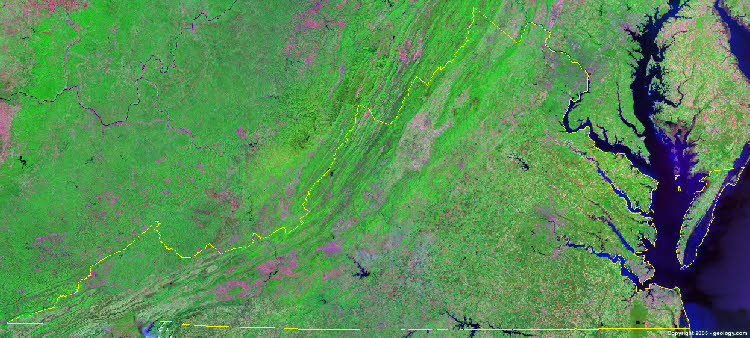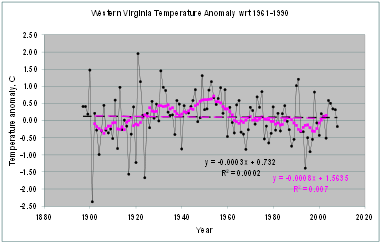

Virginia Climate
1 -
2 -
3 -
4 -
5 -
7 -
Climategate
Climategate centers around the story of the hacking or whistle-
Climategate, climate, and energy Youtubes can be reached by clicking here
For a list of Climategate and other Climate stories at American Thinker, click here
For a list of Climate-
Climate ,
Man or Nature?
Earth’s climate is a multi-
Earth’s climate is a dynamic phenomena. It is never the same, a state of all of
the above in a constant state of change, compensation, balance , and lack of balance.
Surprisingly, it is a stable dynamic -
If there is one of the parameters we associate most with climate it is temperature. So for the rest of this discussion will center on ‘temperature’. We will develop this discussion as we conclude results from data mining and our own studies.
Climategate
Report 4 provided at the top of this page provides a description of what Phil Jones
at the CRU referred to as “Mann’s Nature Trick” (MNT) in one of the Climate Gate
Emails. MNT was a falsification of temperatures he found from tree-
The message behind all of the Mann and Jones fraud is that none of the data is correct and it hides the cycling of temperatures from warmer times and colder periods than any we have experienced in the past 100 years. These are periods called ‘Medieval Warming’ and ‘The Little Ice Age’.
And what about those instrumentation-
Contiguous U. S. Temperature
The question is -
The Russian work caused me to wonder if the Contiguous U. S. temperature data published by the NCDC is any more accurate or correct. Paper 5 at the top of this page details a study of the Contiguous U. S. I have done using NCDC data. For this study I selected two sets of 48 metrological stations, one for rural sites and another for urban sites. For each set I used the Raw NCDC data set and their ‘adjusted’ data set.
The Raw set is that data measured, recorded, and documented at the respected stations
for the period from 1895 to 2008. The Adjusted set is that data resulting from the
Raw set after the NCDC has applied its protocols to adjusted the data for time-
The rates of temperature increase (Deg C per century) determined for the two sets of stations, using Raw and Adjusted data are shown in the following Table. Included in the Table is the NCDC.
Raw Adjusted
Rural 0.13 0.79
Urban 0.64 0.77
Rural & Urban Combined 0.52 0.71
NCDC -
The NCDC results is a combination of rural-
The NCDC Adjusted data alters the Rural site data so it is urban in character. In
other words, Nature has been made to look more like the environment caused by an
urban-
And before leaving this consideration of temperature increase per century consider
the following graph. It is the average for 5 NOAA metrological stations in the western
portion of the Commonwealth of Virginia: Woodstock, Staunton, Lexington, Hot Springs,
and Burkes Garden. The beauty of these stations is there are only three years in
the raw data, one for Staunton and 2 for Hot Springs, for which data are missing.
The yearly average is -

For a discussion of Global temperature reported by CRU, GISS, and the NCDC click here, and select Report 3.
For a discussion of the Urban Heat island Effect and its role in the NCDC projections of Climate Change click on Paper 6 at the top of this page.
What Causes Temperature Change?
To be continued when there is time to add to this page.